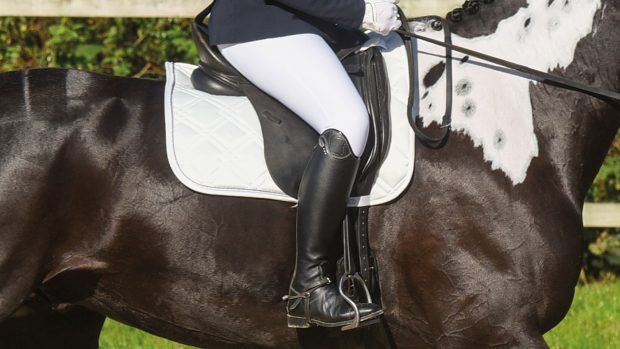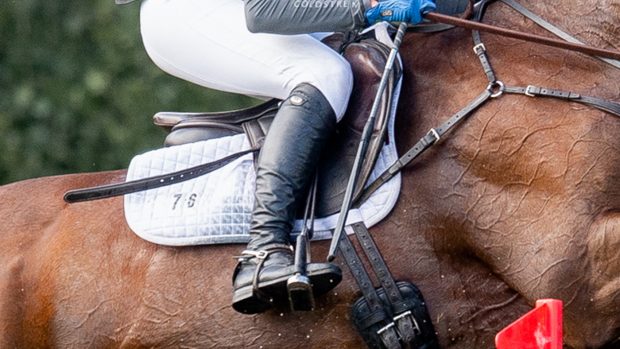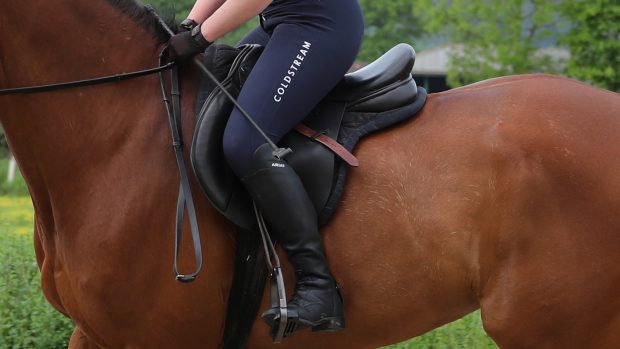1. The angle of the saddle’s tree must correspond to the shape of the horse’s back, behind the shoulder. If not, the saddle will move around excessively and cause pain and discomfort.
2. The saddle must have bearing surfaces (the panels on the underside) that are as big as possible, that sit evenly, and come into even contact with the horse’s back. A saddle that ‘bridges’ – where the panels don’t follow the outline of the horse’s back – will create severe pressure-points.
3. It should be possible to place a flat hand between the front of the tree and the horse’s shoulder, immediately behind his scapula, and to slide the hand evenly from top to bottom. Tightness at the top or bottom indicates that the angle of the tree and the angle of the horse’s shoulder blades are not compatible. This test should be carried out when the saddle has been correctly positioned on the horse but has not been girthed up.
4. The gap across the gullet area must be sufficiently wide to prevent the edge of the gullet pressing on the side of the vertebrae throughout the entire length of the saddle.
5. There must be adequate clearance under the saddle arch, above and either side of the wither and throughout the entire length of the gullet. The amount of space will vary according to the horse’s conformation and the design of the saddle. Checking for adequate clearance should be only be carried out when the saddle is girthed up and the rider mounted.
6. The saddle must be correctly balanced, with the cantle slightly higher than the pommel. The rider should be comfortably in the centre of the saddle in all paces.
7. There should be no adverse movement, such as the saddle moving up and down or to either side. Note: Even a very well-fitting saddle will move slightly.
8. The rear of the saddle must never extend beyond the horse’s last rib (the 18th).
9. The saddle tree and saddle panels must be entirely symmetrical, and the stirrup bars identically positioned.
10. The saddle must not interfere with the movement of the horse’s scapula, which rotates in a backward direction.



